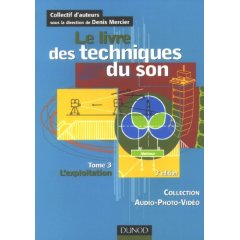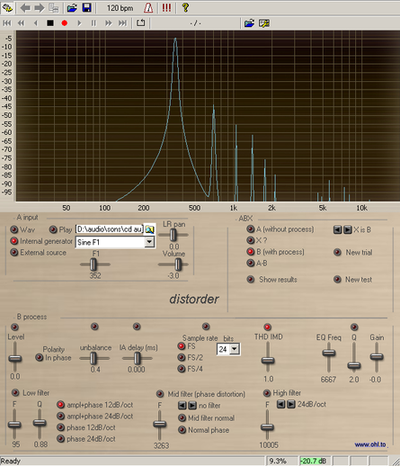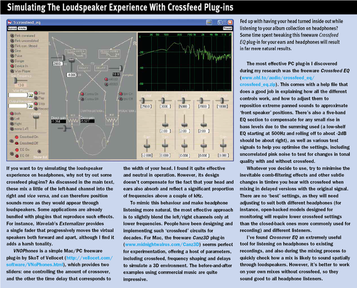J’ai fait un conteneur VST avec :
– SIR
– convolver
– Pristine Space
ce qui permet de les comparer facilement. Ce VST n’est plus dispo sur la page download (je l’ai enlevé puisque The Final Cut est sorti avec Convolver intégré)
Notes :
– pour éviter une erreur avec Convolver, recopier les deux fichiers libfftw3f-3.dll et libsndfile-1.dll, qui seront dans le dossier “convolver†dans le dossier contenant convolver.exe (ou dans un path reconnu de votre windows)
– avec Convolver, on peut partitionner : il s’agit d’une technique de calcul qui permet de diminuer sensiblement la latence, à essayer.
Le but, c’est de mesurer la réponse enceintes+pièce, de créer le filtre inverse, d’intégrer ce filtre dans un plug-in égalisation+crossover et d’avoir un player multimédia qui accepte ce plug-in.
La mesure et la création du filtre inverse peuvent être fait avec DRC ou REW ou autre. Puis je peux faire un VST qui inclut la convolution de ce filtre inverse et le crossover LSfilter, éventuellement en multicanal. Après il faut trouver un player acceptant le VST (Foobar, Winamp ou ADA ? autres ?)
Le plus compliqué, c’est de définir le filtre inverse : linéariser la courbe de l’enceinte, corriger la réponse dans le grave et une partie des premières réflexions dues aux parois proches, mais corriger les problèmes de modes de la pièce ? je doute.
Dans un premier temps, ce serait intéressant d’avoir des avis sur la qualité, la facilité, la consommation CPU, etc… des différents softs de convolution et sur les autres besoins. Et déjà me dire si ça marche !



